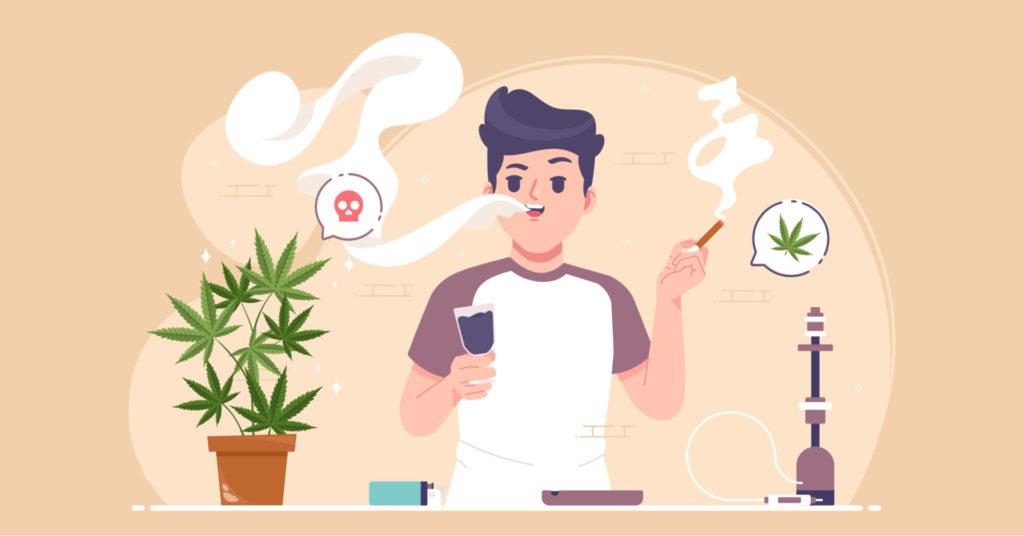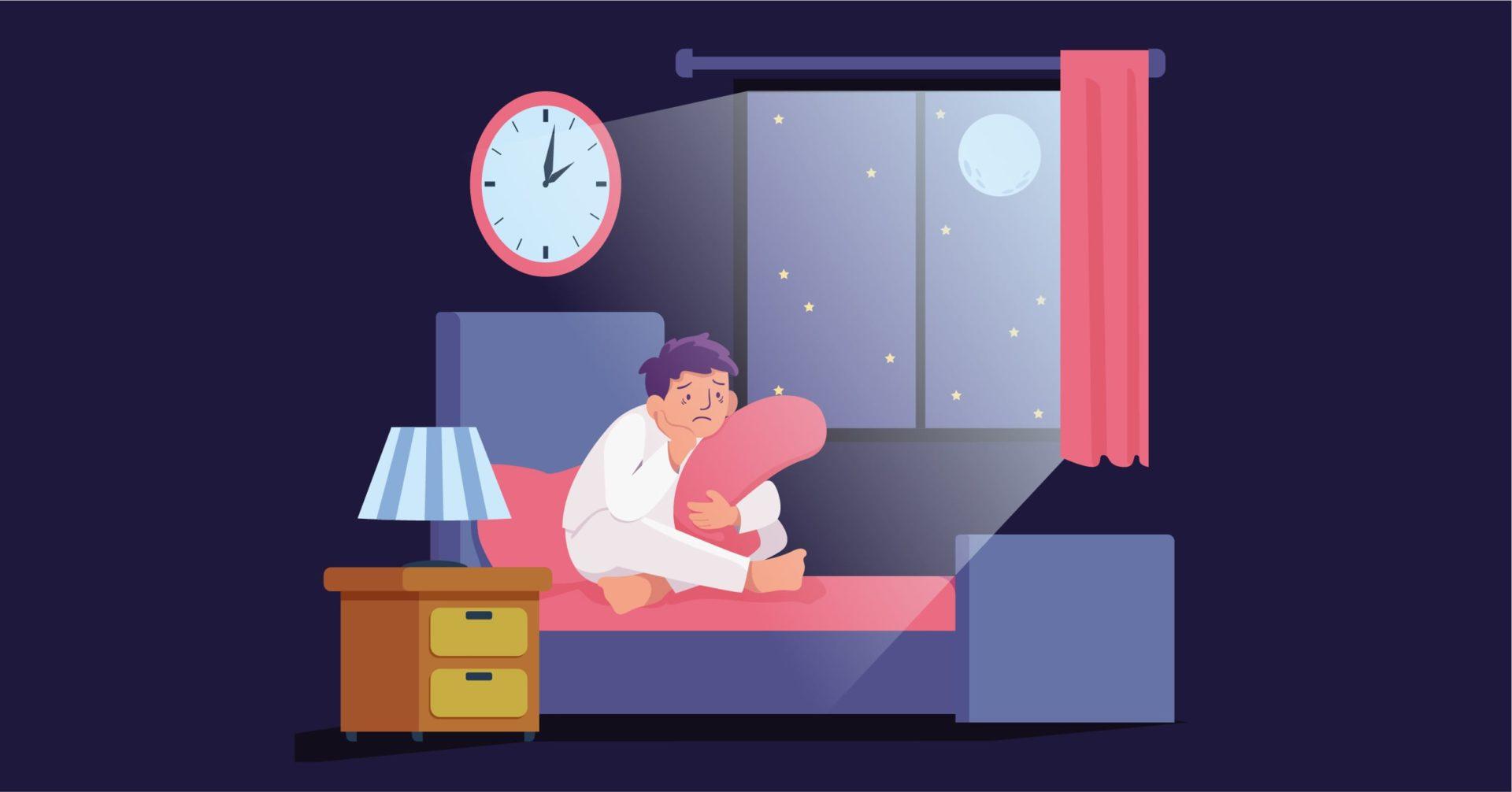Overview
Cannabis is considered to be the most common illicitly used drug in the world. However, sustained and heavy use of the drug can be problematic, leading to significant behavioral, psychological, and physiological changes.
While oral formulations of cannabis may be prescribed for medical use, the substance is commonly used for non-medical purposes, and is usually smoked via pipes, bongs or hookahs, joints, or blunts.
Cannabis may also be mixed into food in the form of ‘edibles’, or vaporized. The use of the substance can lead to intoxication, and abrupt cessation of use commonly brings about withdrawal symptoms.
There is a male preponderance in the prevalence of Cannabis Use Disorder, and it is most commonly observed among adolescents and those in early stages of adulthood. Biological, psychological, social, and environmental factors are considered to play a part in the etiology of the disorder.
Cannabis Use Disorder often occurs independently, but comorbidities may exist in the form of other substance use disorders, mood disorders, conduct disorder, and more. Physical health issues are also considered to co-occur with the disorder, most commonly affecting the respiratory system. ‘
Management of Cannabis Use Disorder is typically carried out through psychosocial intervention.
Signs and Symptoms
The signs and symptoms of Cannabis Use Disorder may include:
- Using cannabis for longer than intended
- Using cannabis in larger amounts than intended
- Desire to cut down on the use of cannabis
- Unsuccessful attempts at cutting down on the use of cannabis
- Craving the use of cannabis
- Using cannabis throughout the day for extended periods of time
- Being unable to carry out daily activities due to use of cannabis
- Continuing use of cannabis in spite of knowledge of physical or psychological problems owing to its use
- Chronic cough
- Redness in eyes
- Yellowing of fingertips
- Odor of cannabis on clothing
- Intense craving of specific foods at odd hours
- Changes in mood stability and energy levels
Risk Factors
Cannabis is speculated to be the most widely used illicit drug in the world, and is also considered to be among the first substances that is tried along with alcohol and tobacco, usually during adolescence. Males are considered to use cannabis more predominantly than females.
While Cannabis Use Disorder may develop at any time, since the use of cannabis is more prevalent among younger age groups such as adolescents or those in early adulthood, these populations are considered to be at a higher risk.
However, due to the conception and acceptance of ‘medical marijuana’, the use of cannabis may also be seen more among older age groups. The onset is considered to be progressive, though this progression may be observed as more rapid among adolescents.
A genetic liability of Cannabis Use Disorder has been implicated. The role of genes involved in dopamine regulation, cannabinoid reception, and transporter genes has been speculated.
Research has suggested that early exposure to cannabis during developmental periods can affect gene expression, which can further play a part in transmission of risk of Cannabis Use Disorder.
Certain temperamental factors are also considered in the etiology of Cannabis Use Disorder. Children with a history of conduct disorder or antisocial personality disorder are considered to have a higher likelihood of developing Cannabis Use Disorder in later life.
Social factors are also taken into consideration. Learning and modeling, which is often based on the observation of the behavior of other individuals, can have an influence on determining cannabis use and the subsequent development of the disorder.
Self-efficacy plays a vital role in this process, as individuals may be more likely to use cannabis if they believe they do not have the efficacy, or ability, to resist it. These individual factors can interact with environmental factors such as peer pressure or media influence to heighten the risk of cannabis use. Factors such as positive reinforcement are also important to consider.
Numerous environmental factors come into play, which are often commonly implicated in increasing the risk of substance use disorders. Family-related stressors including separation of parents, losing a parent, growing up without parents, parental conflict, parental drug use, being permissive with regards to the use of drugs, presence of psychopathology among parents, or poor child-rearing can affect cannabis use.
Further, other life-related stressful events can include behavioral difficulties or turbulence in life.
Cultural norms of the place of residence, such as attitudes towards drug use, availability of drugs, and laws surrounding drug use can also have an effect. A higher number of stressors during adolescence is associated with a higher risk of development of Cannabis Use Disorder.
All in all, the etiology of Cannabis Use Disorder is often looked at through a multifactorial lens, with the implication of biological, social, and psychological factors in contributing to the risk, as well as factors such as environmental stressors playing a part in modifying this risk.
Comorbid mental health issues may occur along with Cannabis Use Disorder. Mental health treatment as well as lower life satisfaction have been associated with the disorder. Anxiety, depression, attempts of suicide, and conduct disorder are commonly linked to the disorder.
Chronic Cannabis Use Disorder has been further been associated with bipolar I disorder, antisocial, obsessive-compulsive and paranoid personality disorders, ADHD, and posttraumatic stress disorder.
Physical health conditions usually include respiratory issues such as bronchitis and shortness of breath. Cardiovascular, immune, neuromuscular, ocular, and reproductive disorders, as well as issues with cognition and perception may occur.
Cannabis is also commonly termed as a ‘gateway drug’ and is presumed to lead to the development of other substance use disorders, including more dangerous substances such as opioids or stimulants including cocaine.
Diagnosis
Initial signs of Cannabis Use Disorder include the persistent use of cannabis coupled with problematic social behavior as well as a deterioration in physical or mental health. Screening for Cannabis Use Disorder ideally includes an assessment of the quantity and quality of substance used, as well as the frequency of use.
Clinical interviews may integrate cannabis use scales as well as psychometric tools in order to assess the disorder. Physical examination and urine testing may be carried out in order to detect recent use of substance.
The DSM-5 provides the following criteria for the diagnosis of Cannabis Use Disorder:
A. A problematic pattern of cannabis use leading to clinically significant impairment or distress, as manifested by at least two of the following, occurring within a 12-month period:
- Cannabis is often taken in larger amounts or over a longer period than was intended.
- There is a persistent desire or unsuccessful efforts to cut down or control cannabis use.
- A great deal of time is spent in activities necessary to obtain cannabis, use cannabis, or recover from its effects.
- Craving, or a strong desire or urge to use cannabis.
- Recurrent cannabis use resulting in a failure to fulfill major role obligations at work, school, or home.
- Continued cannabis use despite having persistent or recurrent social or interpersonal problems caused or exacerbated by the effects of cannabis.
- Important social, occupational, or recreational activities are given up or reduced because of cannabis use.
- Recurrent cannabis use in situations in which it is physically hazardous.
- Cannabis use is continued despite knowledge of having a persistent or recurrent physical or psychological problem that is likely to have been caused or exacerbated by cannabis.
- Tolerance, as defined by either of the following:
- A need for markedly increased amounts of cannabis to achieve intoxication or desired effect.
- Markedly diminished effect with continued use of the same amount of cannabis.
- Withdrawal, as manifested by either of the following:
- The characteristic withdrawal syndrome for cannabis.
- Cannabis (or a closely related substance) is taken to relieve or avoid withdrawal symptoms.
Treatment
The driving force behind treatment strategies for Cannabis Use Disorder is expected to focus on increasing functionality and reducing the overall effect of maladaptive functioning that occurs as a result of the disorder.
The main hurdle in treating the disorder is the possibility of individuals experiencing withdrawal symptoms upon cessation after prolonged use. A gradual decrease of cannabis use is recommended as opposed to abrupt cessation of use.
This is considered to be instrumental in reducing both, severity of withdrawal symptoms as well as chances of relapse. Certain forms of behavioral management coupled with pharmacotherapy may make this process easier to deal with.
Various psychosocial interventions have proven to be effective in the management of Cannabis Use Disorder. Cognitive Behavioral Therapy (CBT) aimed at resolving the disorder works by looking at cannabis use in the form of a learned behavior, and subsequently identifying the thoughts and triggers that may lead to its occurrence.
By reinforcing self-efficacy, problem-solving skills, positive coping strategies, and relaxation techniques, CBT aims to increase the individual’s ability to refuse the use of cannabis.
Similar efficacy has been proven in the case of Motivational Enhancement Therapy (MET), in which the therapist adopts a non-judgmental and empathetic approach and facilitates an assessment of the pros and cons of cannabis use behaviors on the part of the individual, and later enables the individual to identify risks and increase self-efficacy.
Contingency Management, which is another form of intervention that has proven useful among substance use disorders, works by implementing the concept of positive reinforcement in order to encourage abstinence.
Individuals receive various incentives in order to reward refusal behavior. Other forms of psychosocial therapy include mindfulness training, drug use counselling and education, as well as social support counselling.
No pharmacological intervention exists specifically for Cannabis Use Disorder, but the efficacy of benzodiazepines has been speculated in treating sleep-related withdrawal symptoms.
Largely, coping strategies are reinforced to effectively manage withdrawal symptoms, such as consuming nutritious food, taking hot baths, and engaging in supportive care to reinforce the temporary nature of symptoms.
Differential Diagnosis
1. Non problematic use of cannabis: The distinction between non problematic use of cannabis and cannabis use disorder can be difficult to make because social, behavioral, or psychological problems may be difficult to attribute to the substance, especially in the context of use of other substances. Also, denial of heavy cannabis use is common among individuals who are referred to treatment by others.
2. Other mental disorders: Cannabis-induced disorder may be characterized by symptoms (e.g., anxiety) that are similar to other mental disorders like generalized anxiety disorder, cannabis-induced anxiety disorder, generalized anxiety. Chronic intake of cannabis can produce a lack of motivation that resembles persistent depressive disorder (dysthymia). Acute adverse reactions to cannabis should be differentiated from the symptoms of panic disorder, major depressive disorder, delusional disorder, bipolar disorder, or schizophrenia, paranoid type. Physical examination will usually show an increased pulse and conjunctival injection. Urine toxicological testing helps in making a clear diagnosis.
Comorbidity
Cannabis use disorder is highly comorbid with other substance use disorders. Cannabis use
has been associated higher rates of depression, anxiety disorders, suicide attempts, and
conduct disorder. Individuals with cannabis use disorder have high rates of alcohol use disorder (greater than 50%) and tobacco use disorder (53%). Rates of other substance use disorders are also likely to be high among individuals with cannabis use disorder.
Cannabis use impacts normal human functioning, including the cardiovascular, immune, neuromuscular, ocular, reproductive, and respiratory systems, appetite and cognition/perception.
The most significant health effects of cannabis involve the respiratory system. Chronic cannabis smokers have high chances of bronchitis, sputum production, shortness of breath, and wheezing.
Specialist
The presence of Cannabis Use Disorder is likely to be identified and initially assessed by a primary healthcare provider and toxicologist.
Based on the severity of symptoms, the individual may be referred to a psychiatrist, clinical psychologist or certified therapist who can provide adequate intervention and facilitate abstinence from cannabis use.





